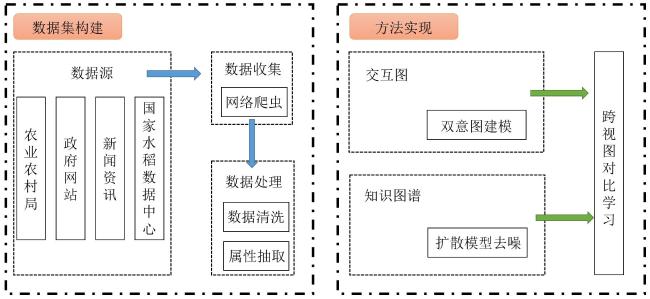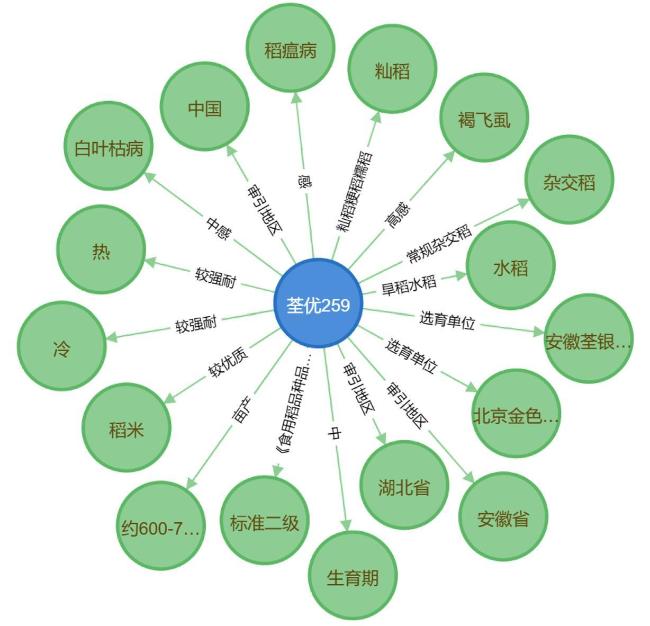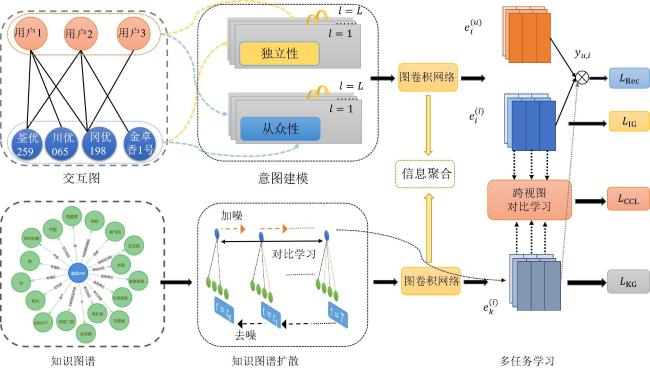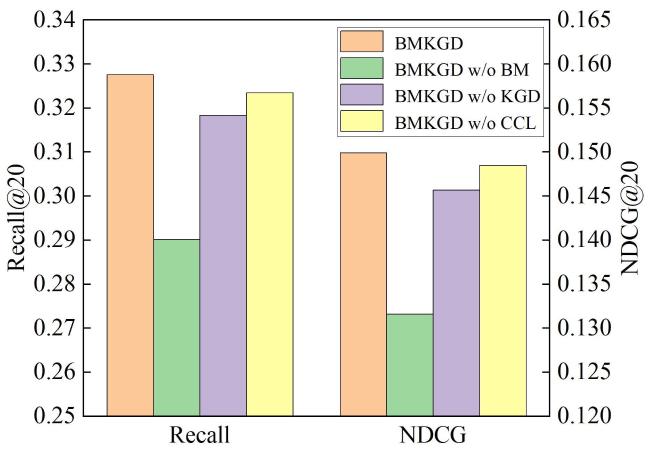0 引 言
1 水稻品种选育推荐方法架构
2 数据集构建
2.1 数据获取
表1 水稻交互数据部分示例Table 1 Partial examples of rice interaction data |
| 地区/用户 | 交互水稻品种 |
|---|---|
| 安徽省合肥市肥西县 | 荃两优2118、南粳60、隆两优608、徽两优1133、晶两优1237、徽两优719、扬籼优953、桃两优316……隆两优608、桃两优316、Q两优169、吨两优900、深两优008、旺两优1577、南粳2728、玮两优1206 |
| 肥西县模拟用户-0 | 荃两优2118、南粳60……隆两优608、桃两优316 |
| 肥西县模拟用户-1 | 隆两优608、徽两优1133……Q两优169、吨两优900 |
| 肥西县模拟用户-2 | 晶两优1237、徽两优719……深两优008、旺两优1577 |
| 肥西县模拟用户-3 | 扬籼优953、桃两优316……南粳2728、玮两优1206 |
2.2 数据集构建
3 研究方法
3.1 双意图建模
3.2 知识图谱扩散
3.3 多任务学习
4 结果与分析
4.1 评价指标
4.2 参数分析
表2 权重参数 设置对 模型性能的影响Table 2 Effect of weight parameter α setting on BMKGD on model performance |
| 参数 | Recall | NDCG |
|---|---|---|
| α=100 | 0.324 6 | 0.148 8 |
| α=10 | 0.327 6 | 0.149 9 |
| α=1 | 0.323 0 | 0.146 2 |
表3 权重参数 设置对 模型性能的影响Table 3 Effect of weight parameter setting on BMKGD on model performance |
| 参数 | Recall | NDCG |
|---|---|---|
| β=10 | 0.326 7 | 0.149 6 |
| β=1 | 0.327 6 | 0.149 9 |
| β=0.1 | 0.327 4 | 0.149 3 |
表4 权重参数 设置对 模型性能的影响Table 4 Effect of weight parameter setting on BMKGD on model performance |
| 参数 | Recall | NDCG |
|---|---|---|
| γ =10 | 0.322 4 | 0.145 9 |
| γ =1 | 0.327 6 | 0.149 9 |
| γ =0.1 | 0.324 3 | 0.148 1 |
4.3 对比实验
表5 BMKGD模型与不同基线模型水稻品种选育的对比结果Table 5 The overall performance for BMKGD and baseline models of selection of rice varieties |
| 模型 | Recall | NDCG |
|---|---|---|
| BPR | 0.283 3 | 0.129 1 |
| CKE | 0.292 7 | 0.130 8 |
| KGNN-LS | 0.274 3 | 0.115 6 |
| KGCN | 0.276 7 | 0.118 7 |
| KGAT | 0.259 7 | 0.112 7 |
| KGIN | 0.283 0 | 0.125 0 |
| KGCL | 0.301 2 | 0.135 7 |
| BIGCF | 0.318 5 | 0.144 5 |
| DiffKG | 0.268 0 | 0.122 3 |
| BMKGD | 0.327 6 | 0.149 9 |












